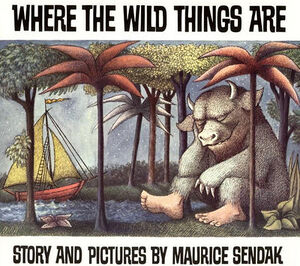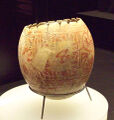Where The Wild Things Are (nonfiction): Difference between revisions
Jump to navigation
Jump to search
No edit summary |
|||
| Line 22: | Line 22: | ||
* [[Where The Wild Things Were]] | * [[Where The Wild Things Were]] | ||
External links: | |||
* [http://wiki.karljones.com/index.php?title=Where_the_Wild_Things_Are Where The Wild Things Are] @ wiki.karljones.com | * [http://wiki.karljones.com/index.php?title=Where_the_Wild_Things_Are Where The Wild Things Are] @ wiki.karljones.com | ||
* [https://en.wikipedia.org/wiki/Where_the_Wild_Things_Are Where the Wild Things Are] @ Wikipedia | * [https://en.wikipedia.org/wiki/Where_the_Wild_Things_Are Where the Wild Things Are] @ Wikipedia | ||
[[Category:Books]] | [[Category:Fiction (nonfiction)]] | ||
[[Category:Books (nonfiction)]] | |||
Revision as of 20:20, 22 June 2016
Where the Wild Things Are is a 1963 children's picture book by American writer and illustrator Maurice Sendak, originally published by Harper & Row.
The book had sold over 19 million copies worldwide as of 2009, with 10 million of those being in the United States.
Sendak won the annual Caldecott Medal from the children's librarians in 1964, recognizing Wild Things as the previous year's "most distinguished American picture book for children".
In the News
Egg Tooth Neighborhood Association adopts decorated egg (circa 599 BC - 300 BC) as new logo.
Fugitive monster Egg Tooth, hidden among Frank Lloyd Wright's "lily pad" pillars in the Johnson Wax Headquarters.
Nonfiction cross-reference
Fiction cross-reference
External links:
- Where The Wild Things Are @ wiki.karljones.com
- Where the Wild Things Are @ Wikipedia


